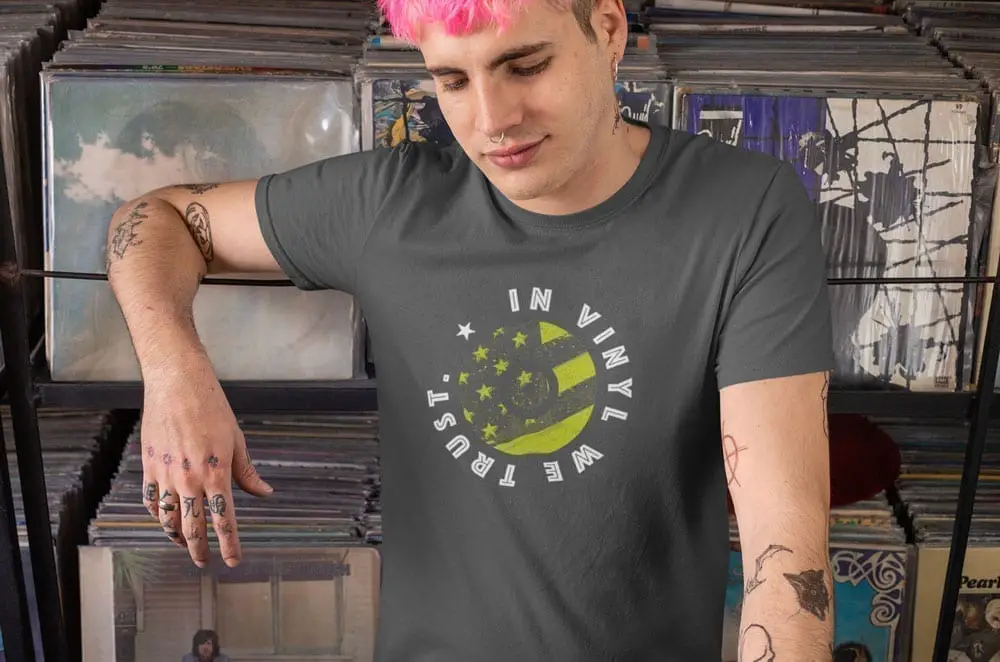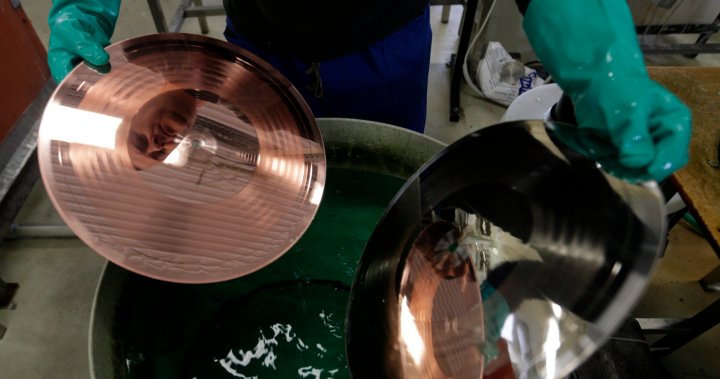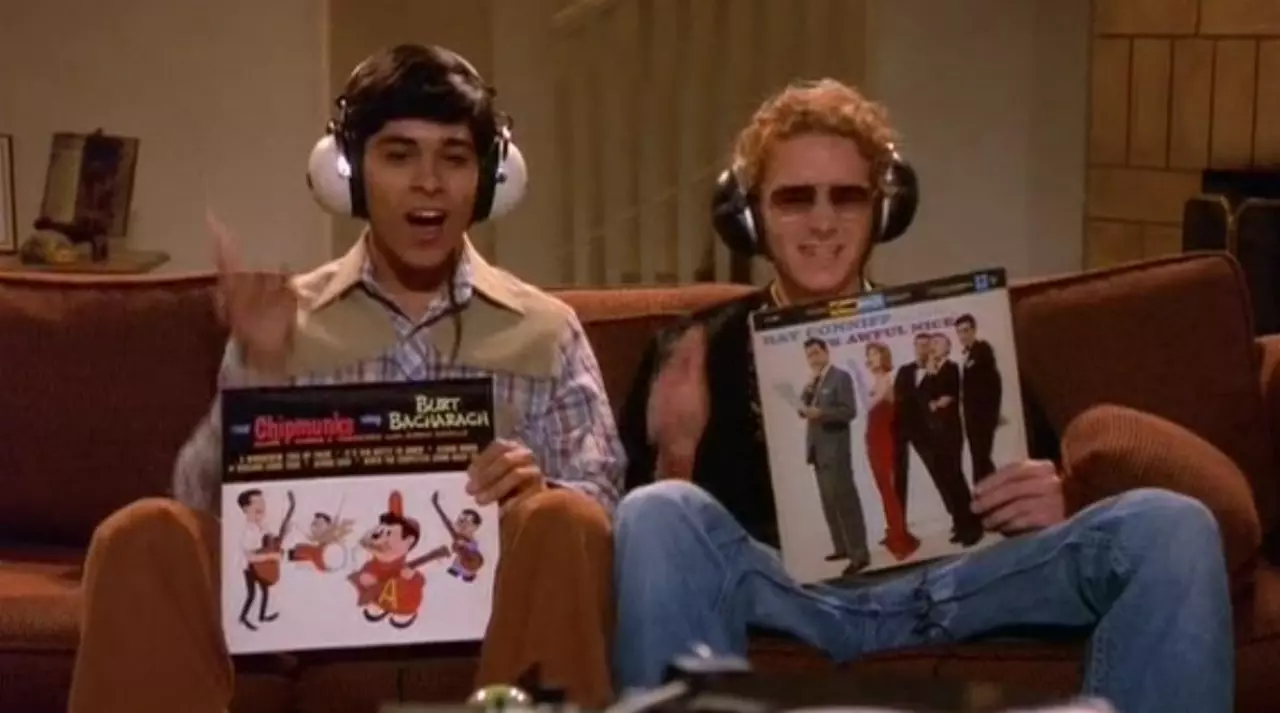You see? It's a 'Renaissance' but please don't ask why.Loud pipes are ANNOYING

You see? It's a 'Renaissance' but please don't ask why.Loud pipes are ANNOYING

It's for blind pedestrians (and in some places it's required) Perhaps sponsored by the "Loud Pipes Save Lives" folks (whom I tend to agree with but lately many of them seem to think that they should be fully unmuffled). So I have modified my agreement to yes, Loud Pipes Do Save Lives BUT VERY Loud pipes are ANNOYING.
Back in the 70s in the days of "Quadraphonic", one of the systems used FM modulation on vinyl (I think 30kHz) and the Shibata stylus was specifically designed for cartridges playing these records.
I don't doubt that. The only experience with these records I have is hearing about them when they were a thing. I seem to remember that only the surround tracks were FM encoded, but I could be wrong.Indeed. But the actual frequency response of CD-4 cartridges above 20 KHz was anything but smooth. It didn't have to be, so long as there was sufficient level for the FM discriminator.
All of the graphs I have are on paper, but a few moment's online searching in places such as vinylengine and audioasylum, and back issues of magazines such as HFN&RR, Hifi World and Stereophile etc will bring up plenty of examples. The common theme is that significant response variations can start as low as 10 to 15 KHz. Some high end carts do manage to stay within +- 2 dB to 20 KHz or so.
This P-mount cartridge comes in a small box with the external Technics ad nomenclature writes in the box. Inside we find a plastic “ box “ where the EPC-P100C MK4
The greatest cartridge ever made, and bandwidth to spare.I was expecting someone to pick up on the specified Rumble: -82dB being better than "the cartridge will have about a 70 dB limit because of Johnson noise"
In my experience, that spec (combined with my average listening rooms and average to loud listening volume levels) pretty much eliminates hearing noise from the turntable itself.
As to cartridges in the past that could exceed 30 KHz, here is one (of many by many different manufacturers) the best of the moving magnet designs (English is NOT the native language of the un-boxer of this item):
This P-mount cartridge comes in a small box with the external Technics ad nomenclature writes in the box. Inside we find a plastic “ box “ where the EPC-P100C MK4 comes mounted and fixed through a screw in an item that looks like a especial plastic headshell that protect against any bad handling box. We find here the hardware that we need to mount it like: an “ open frame “ P-mount universal adaptor, screws, headshell wires ( these has especial connectors due that the cartridge pins connectors are very think against the pins connectors in a normal ½” cartridge. ), two screwdrivers: one to fix the cartridge to the mount adaptor with the dedicated screw and one ( small one. ) to fix the cartridge stylus (through a thin philips type screw.) to the cartridge body, a warranty card . a operation manual and frequency response/crosstalk charts/diagram of my specific cartridge sample.
The cartridge it self is beautiful made in champagne color with rear plate in black. The Technics people was really especial,, in the left cartridge body side we can read: type of cantilever, cartridge recommended VTF and Matushita Electronics/Made in Japan.
Build/design cartridge characteristics and specifications:
It is a moving magnet one-point suspension with “ all HPF core, precision ground finish “, the cantilever is pure boron tapered pipe with a TTDD ( Technics Temperature Defense Damper ), the magnet is a Disc-shaped samarium-cpbalt with (BH) max=30 MG . Oe, the stylus tip is a especial linear elliptical stylus, with an effective moving mass of 0.055 mg. ( please don't ask what means these Technics propietary " cartridge design/build " characteristics: I don't have idea yet. )
Frequency response: 5 Hz- 120,000 Hz
20 Hz- 20,000 Hz +,- 0.3 db ( **** )
15 Hz- 80,000 Hz +,- 3 db
Output voltage: 1.2 mV ( * )
Channel separation: more than 25 db.
Channel balance: within 0.5 db
Compliance: 12cu ( 100 Hz, dynamic. )
DC resistance: 30 Ohms ( ** )
Inductance: 33 mH
Recommended load
Resistance: 10 kohms to 1 Mohms!
Recommended load
Capacitance: less than 500 pf. ( *** )
VTF: 1.25 +,-0.25 g.
( * ): both channels measure the same output voltage with out any measurable difference!!!!!
( ** ) both channels in my sample measure the same: 37.3 Ohms with out any measurable difference!!!!!!!
( *** ) the Technics chart measures states that they use 100 pf. I’m using 150pf.
( **** ) each one Technics chart channel frequency response shows “ identical “ with no “ visual “ deviation for both channels!!!!!!!
The stylus replacement model is: EPS-P100ED4.
Is this the shirt?This love of vinyl looks to be much more than just a renaissance or a even a passion.
Disciples and devotees are coming out of the wood-works, as if it was a religion... and all I got left is the t-shirt.


This P-mount cartridge comes in a small box with the external Technics ad nomenclature writes in the box. Inside we find a plastic “ box “ where the EPC-P100C MK4
but I believe @JP has every one now.
Would only make sense if more than 5% of recorded music consumers were doing so on vinyl. Like, 10x more. That was the 70's, that was a Generation.Is the vinyl boom creating a new generation of audiophiles?

COMMENTARY: Is the vinyl boom creating a new generation of audiophiles? - National | Globalnews.ca
One of the things driving vinyl's continued resurrection is the contention that it sounds better than other formats. But are people prepared to buy the necessary audio gear?globalnews.ca
Would actually make some sense though. Following the last couple decades of "good enough audio" and "convenience listening" as you do other things, it might be changing. One of the constant themes you hear from new vinyl converts young and old is in how it encourages active listening. Actually sitting down to concentrate on just the music. Which is right in the wheel-house of audiophiles. So once you are willing to actually just sit in front of your system and listen, it's a logical step to be be curious about an even "better" listening experience, and wonder about upgrading your gear.
I've certainly seen that trend in the vinyl/audiophile forums, which tend to skew younger, on reddit.
Caring about better audio will always be a niche, but perhaps that niche is growing.

Yes, Ray Conniff. I actually have that album. I grew out of the Chipmunks though.Would only make sense if more than 5% of recorded music consumers were doing so on vinyl. Like, 10x more. That was the 70's, that was a Generation.

I understand the issue of loading. Its to correct the electrical resonance the inductance of the cartridge has with the cable capacitance and input capacitance of the phono section. I always find it amusing when cartridge manufacturers include a graph of the FR of their cartridge and at 20KHz the graph falls dramatically to zero as if that's what the cartridge actually doesDo you mind posting some links to any cartridges showing carts that have the bandwidth you describe?
You most likely have some loading issues where you're getting excessive treble boost which isn't good for playback but is the only way one might get the results you are talking about.
The phono section I had in mind is opamp based and has an input impedance of about 1K, being a LOMC phono section; with the cartridge connected the noise floor was about -75dB. However this issue side steps the point I was making which is that the lacquer itself is considerably quieter. You can use other cartridges, such as a strain gauge and then there is no need for the phono preamp, only a small bit of EQ to get the output to follow the RIAA curve, and that can be run into an auxiliary input. Even then, the lacquer cut is lower noise. When the noise is less than the level of a line level input, then for all practical purposes the noise floor is as good as any other line level source since the electronics of the amplification defines the noise floor. Of course the lacquer is a bit different from the final product!The numbers don’t lie- the Johnson noise equation is rigorously correct as a lower bound for noise voltage. For MMs loaded with 47k things are even a bit worse in the top octave as the source impedance rises from cartridge inductance and shunting of the input noise is less effective. I put up a spreadsheet on my website which allows noise calculations for phono, and the results are in excellent agreement with experiment.
If attaching a cartridge lowers the noise, it’s because the 47k load resistor is the limitation and is being shunted by the cartridge’s DCR at bass and midrange.
-75 dB is the electrical noise floor I assume.... the "roar" is always much higher than that more like -40 dB as best. Maybe it is that I have never played a "lacquer" before... where would I find one to play? I am not knocking vinyl as I enjoy it but -75dB or even -60 dB seems VERY optimistic to me.I understand the issue of loading. Its to correct the electrical resonance the inductance of the cartridge has with the cable capacitance and input capacitance of the phono section. I always find it amusing when cartridge manufacturers include a graph of the FR of their cartridge and at 20KHz the graph falls dramatically to zero as if that's what the cartridge actually does
The phono section I had in mind is opamp based and has an input impedance of about 1K, being a LOMC phono section; with the cartridge connected the noise floor was about -75dB. However this issue side steps the point I was making which is that the lacquer itself is considerably quieter. You can use other cartridges, such as a strain gauge and then there is no need for the phono preamp, only a small bit of EQ to get the output to follow the RIAA curve, and that can be run into an auxiliary input. Even then, the lacquer cut is lower noise. When the noise is less than the level of a line level input, then for all practical purposes the noise floor is as good as any other line level source since the electronics of the amplification defines the noise floor. Of course the lacquer is a bit different from the final product!
Again, the main limitations of LP is not the media- its the playback.
I've not saying that the LP is better than digital. I'm simply pointing out that the common tropes about why are not all true. The media has the ability to be nearly as quiet, it has wider bandwidth (the bottom end being limited by the mechanical resonance of the pickup, which should be between 7 and 12Hz) and the distortion of the media itself is quite low, for those that like to play the numbers game, low enough that its inaudible. The media is longer lasting but more fragile. Its hard to set up the playback properly and most people fail in that, resulting in excess ticks and pops unrelated to the media, greater distortion, more noise and poor longevity. It costs more to engineer (mastering engineers are typically $500/hour) and that engineering can have a more dramatic effect on the outcome. Finally the main issues that people find objectionable (noise, ticks and pops, distortion) are almost entirely related to playback and are not inherent in the media (but to know that you have to have access to a mastering lathe to really see why).
From the point of view of a band, the LP is attractive because it means you've arrived. Your band is cooler if you produced an LP. This has been a thing for the last 20 years, so naturally if they can, bands press to make an LP (if you see what I did there).
-40dB is very pessimistic for all but the crappiest pressings (and I have enough of those). With a good pressing which is not that rare for something like a Telarc, there very little to no "roar" audible at normal listening levels. The noise levels in pressings varies a massive amount depending on label and intended buyers.-75 dB is the electrical noise floor I assume.... the "roar" is always much higher than that more like -40 dB as best. Maybe it is that I have never played a "lacquer" before... where would you find one to play? I am not knocking vinyl as I enjoy it but -75dB or even -60 dB seems VERY optimistic to me.
A 1k resistor represents about 4nV/rt Hz of noise density. So for an MC of 10R (a typical order of magnitude), the intrinsic input noise will drop to 0.4nV/rt Hz. That's the equivalent input noise of a perfect preamp.I've not saying that the LP is better than digital. I'm simply pointing out that the common tropes about why are not all true. The media has the ability to be nearly as quiet, it has wider bandwidth (the bottom end being limited by the mechanical resonance of the pickup, which should be between 7 and 12Hz) and the distortion of the media itself is quite low, for those that like to play the numbers game, low enough that its inaudible. The media is longer lasting but more fragile. Its hard to set up the playback properly and most people fail in that, resulting in excess ticks and pops unrelated to the media, greater distortion, more noise and poor longevity. It costs more to engineer (mastering engineers are typically $500/hour) and that engineering can have a more dramatic effect on the outcome. Finally the main issues that people find objectionable (noise, ticks and pops, distortion) are almost entirely related to playback and are not inherent in the media (but to know that you have to have access to a mastering lathe to really see why).
From the point of view of a band, the LP is attractive because it means you've arrived. Your band is cooler if you produced an LP. This has been a thing for the last 20 years, so naturally if they can, bands press to make an LP (if you see what I did there).
I'd like to see a spectrum too, although from my experience I'd expect that the noise would be pretty much the same with the cartridge not playing the lacquer as it would be playing the lacquer. Rumble on a well maintained lathe is pretty much nil, and a lacquer which is not defective just doesn't excite the stylus in an unmodulated groove since lacquer is soft and smooth. The stylus is heated as it cuts the groove which lowers noise; the lacquer is in more of a plastic state as its being cut. Its more like a hot knife cutting through butter than a cold chisel gouging through granite.A 1k resistor represents about 4nV/rt Hz of noise density. So for an MC of 10R (a typical order of magnitude), the intrinsic input noise will drop to 0.4nV/rt Hz. That's the equivalent input noise of a perfect preamp.
Do you have spectra of a silent groove in one of these masters playing versus just the cartridge off the disc? That would be good evidence and technically interesting.
